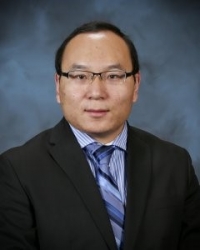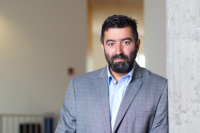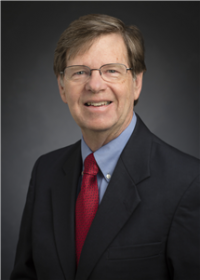Archive for April 2018
Microstructure and mechanical properties of tungsten neutron irradiated with a mixed energy spectrum
SPEAKER: XUNXIANG HU RESEARCH STAFF/EUGENE P. WIGNER FELLOW OAK RIDGE NATIONAL LABORATORY, OAK RIDGE, TN 37931 EMAIL: HUX1@ORNL.GOV DATE/TIME: MON, 04/23/2018 – 4:00PM TO 5:00PM LOCATION: 3105 ETCHEVERRY HALL Spring 2018 Colloquium Series Abstract: Tungsten as a candidate plasma facing material in fusion reactors is confronted by a hostile environment, characterized by high temperature, and high fluxes of heat…
Read MoreNuclear Disarmament Verification via Resonant Phenomena
SPEAKER: AREG DANAGOULIAN ASSISTANT PROFESSOR DATE/TIME: MON, 04/16/2018 – 4:00PM TO 5:00PM LOCATION: 3105 ETCHEVERRY HALL Spring 2018 Colloquium Series Abstract: Nuclear disarmament treaties are not sufficient in and of themselves to neutralize the existential threat of the nuclear weapons. Technologies are necessary for verifying the authenticity of the nuclear warheads undergoing dismantlement before counting them towards a…
Read MoreToward Austenitic Oxide Dispersion Strengthened Alloys for Nuclear Applications
SPEAKER: JAMES STUBBINS, PH.D. DONALD BIGGAR WILLETT PROFESSOR DEPARTMENT OF NUCLEAR, PLASMA AND RADIOLOGICAL ENGINEERING UNIVERSITY OF ILLINOIS AT URBANA-CHAMPAIGN DATE/TIME: MON, 04/09/2018 – 4:00PM TO 5:00PM LOCATION: 3105 ETCHEVERRY HALL Spring 2018 Colloquium Series Abstract: There has been a continuing effort to develop enhanced versions of several types of engineering alloys by strengthening them with a very…
Read MoreEconomic Modeling of Nuclear Hybrid Energy Systems
SPEAKER: DR. CRISTIAN RABITI DATE/TIME: MON, 04/02/2018 – 4:00PM TO 5:00PM LOCATION: 3105 ETCHEVERRY HALL Spring 2018 Colloquium Series Abstract: The increase penetration of variable renewable electricity suppliers in the grid is leading to an increase volatility of the electric net demand (electricity demand minus variable renewable supply). The additional volatility increases the cost of covering net demand…
Read More


